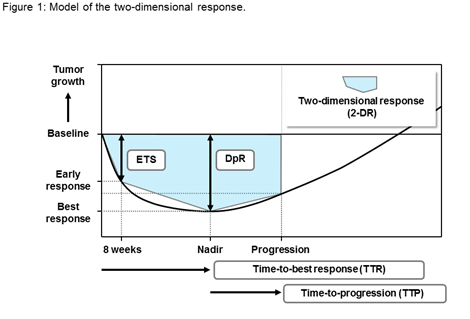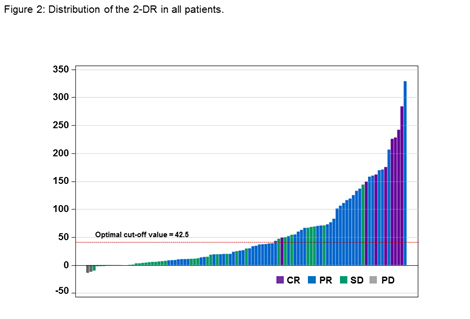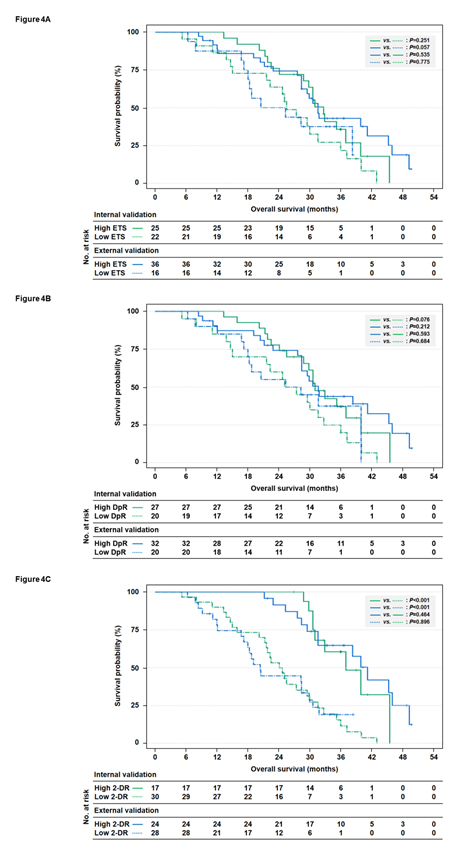Laboratories
- Back
- Top > Laboratories > Surgery > Gastroenterological Surgery
SurgeryGastroenterological Surgery
Introduction
This department provides appropriate and cutting-edge treatments in gastroenterological diseases including neoplasms of the esophagus, stomach, duodenum, small intestines, and large intestines, liver, biliary tract (gallbladder and bile duct), and pancreas. Surgery remains the core of oncological treatment for gastroenterological neoplasms, and ranges from function-preserving/minimally invasive surgery to extended surgery, depending on clinical stage of cancer. Another component of multimodality oncological treatment is chemotherapy. We deliver up-to-date perioperative chemotherapy as adjuncts to surgery. This department also provides surgical treatment for the inflammatory bowel disease. Regarding our roles in education, young surgeons are provided with sufficient opportunity to train themselves in open and laparoscopic surgical skills as well as acquiring knowledge in the cutting-edge oncological treatment, with maximal consideration for the benefit of our patients.
Research Projects
1. Division of esophageal surgery
- Tumor budding of esophageal squamous cell carcinoma
- Less-invasive surgical treatment for esophageal cancer; two field lymphadenectomy and/or intrathoracic anastomosi
- Antethoracic pedicled jejunum reconstruction for esophageal cancer patients in whom stomach cannot be used.
- A randomized controlled phase III comparing CF versus DCF versus CF-RT as neoadjuvant treatment for locally advanced esophageal cancer (JCOG1109)
- Innovation of postoperative management (eg. new technique of jejunostomy and pleural drainage etc.)
2. Division of stomach surgery
- Development of a new multidisciplinary treatment specific to peritoneal dissemination of gastric cancer cells: Peritoneal metastasis and recurrences are frequent causes of death in patients with gastric cancer. We conducted transcriptome and bioinformatics analyses to identify a molecule responsible for mediating peritoneal metastasis for use in a therapeutic target. In vivo experiments using a mouse xenograft model of gastric cancer showed that intraperitoneal administration of the inhibitor decreased the growth of peritoneal nodules.

- Identification of diagnostic and predictive biomarkers specific to liver metastasis of gastric cancer by transcriptome analysis: Gastric cancer cells metastasize via three different routes; hematogenous (including liver), lymphatic and peritoneal metastases. Diverse molecules specific for each metastatic pathway are involved in the formation of lesions. We are trying to identify transcript or methylation markers specific to liver metastasis of gastric cancer.

- Indocyanine Green (ICG) fluorescence imaging for accurate intraoperative detection of early gastric cancer
- Geriatric assessment in gastric cancer surgery
- Development of new training tasks for laparoscopic surgery using surgical simulators
- How to assess surgeons’ burden and fatigue objectively during laparoscopic surgery
- Intraperitoneal chemotherapy for gastric cancer with peritoneal metastasis
Peritoneal metastasis is the most frequent pattern of disease failure among advanced and recurrent gastric cancer patients. Recently, promising efficacy of intraperitoneal chemotherapy has been reported. Intraperitoneal administration of anticancer drugs has the advantage of direct anti-tumor effect against the peritoneal metastasis. We have been exploring the efficacy and safety of intraperitoneal chemotherapy as a member of Japan Intraperitoneal Chemotherapy Group.
- Exploratory analysis of biomarker for gastric cancer chemotherapy in the clinical setting
Nab-paclitaxel (nab-PTX) is a candidate as second-line chemotherapy for gastric cancer in Japan. The prospective trial was conducted to explore the correlation between efficacy of nab-PTX and expression of secreted protein acidic and rich in cysteine (SPARC), which is supposed to mediate delivery of nab-PTX into the tumor.
3. Division of liver surgery
- Identification of genes that are associated with oncogenesis and prognosis through epigenetics in hepatocellular carcinoma
- Hepatic hemodynamic analysis in liver disease
- Clinical study of whole body ultrasonography in perisurgical patients
- Development of hepatectomy using ultrasound navigation system
4. Division of pancreatic surgery
- Neoadjuvant treatment for advanced pancreatic cancer (ex. NACRT)
- Novel surgical procedures to reduce various postoperative complications (ex. modified Blumgart anastomosis)
- Randomized Phase II trial of right half dissection of superior mesenteric artery nerve plexus in pancreatoduodenectomy for pancreatic head cancer
- Phase II study of neoadjuvant FOLFIRINOX or nab-paclitaxel with gemcitabine for borderline resectable pancreatic cancer
- COmbined resection versus Separated resection after MObilization of the Splenic vein during Distal Pancreatectomy; A multicenter, prospective, randomized phase III trial- COSMOS-DP trial
- Phase I study of chemoradiotherapy using gemcitabine plus nab-paclitaxel for unresectable locally advanced pancreatic cancer Nagoya University Pancreatic Tumor Board trial 02(NUPAT-02)
- Multi-institutional phase I /II study of Gemcitabine (GEM) +nab-Paclitaxel (PTX) plus intraperitoneal paclitaxel for pancreas cancer with peritoneal metastasis
- Phase I/II study of intravenous and intraperitoneal paclitaxel for peritoneal metastasis after resection of pancreatic cancer refractory to gemcitabine and fluoropyrimidine chemotherapy
- Individualization of adjuvant chemotherapy for pancreatic cancer
- Exploratory research of novel prognostic factors in pancreatic tumors
- Elucidation of mechanism for invasion and metastasis in pancreatic cancer (ex. EMT)
5. Division of colorectal surgery
- Multicenter phase II study of CapeOX with stop-and-go strategy as adjuvant chemotherapy in high-risk Stage II or Stage III colorectal cancer. (CCOG1302)
- Panitumumab plus mFOLFOX6 therapy for colorectal cancer patients of RAS wild with potential resectable metastases in relation to early tumor shrinkage. (CCOG1401)
- Prospective study of the post-operative anti-TNF-α maintenance therapy for the patients with Crohn’s disease
- Two-dimensional response as surrogate marker of overall survival in patients with metastatic colorectal cancer
Faculty Members
| Faculty | Position | Department |
|---|---|---|
| FUJIWARA Michitaka | Associate Professor | Clinical Simulation Center, Gastroenterological Surgery |
| KOIKE Masahiko | Lecturer of hospital | Gastroenterological Surgery |
| NAKAYAMA Goro | Lecturer | Gastroenterological Surgery |
| YAMADA Suguru | Lecturer | Gastroenterological Surgery |
| KOBAYASHI Daisuke | Lecturer of hospital | Gastroenterological Surgery |
| TANAKA Chie | Lecturer of hospital | Gastroenterological Surgery |
| KANDA Mitsuro | Lecturer | Gastroenterological Surgery |
| IWATA Naoki | Assistant Professor | Emergency and Critical Care Medicine |
| HAYASHI Masamichi | Assistant Professor | Gastroenterological Surgery |
| HATTORI Norifumi | Assistant professor of hospital | Gastroenterological Surgery |
| INOKAWA Yoshikuni | Assistant professor of hospital | Gastroenterological Surgery |
| TAKAMI Hideki | Assistant professor of hospital | Gastroenterological Surgery |
| SHIMIZU Dai | Assistant professor of hospital | Gastroenterological Surgery |
| SONOHARA Fuminori | Assistant professor of hospital | Gastroenterological Surgery |
| KURIMOTO Keisuke | Assistant professor of hospital | Gastroenterological Surgery |
Bibliography
- 2016
- Asano T, Natsume S, Senda Y, Sano T, Matsuo K, Kodera Y, et al. Incidence and risk factors for anastomotic stenosis of continuous hepaticojejunostomy after pancreaticoduodenectomy. J Hepatobiliary Pancreat Sci, 2016; 23: 628-635.
- Inokawa Y, Sonohara F, Kanda M, Hayashi M, Nishikawa Y, Sugimoto H, et al. Correlation Between Poor Prognosis and Lower TPPP Gene Expression in Hepatocellular Carcinoma. Anticancer Res, 2016; 36: 4639-4645.
- Kanda M, Shimizu D, Fujii T, Tanaka H, Tanaka Y, Ezaka K, et al. Neurotrophin Receptor-Interacting Melanoma Antigen-Encoding Gene Homolog is Associated with Malignant Phenotype of Gastric Cancer. Ann Surg Oncol, 2016; 23: 532-539.
- Kanda M, Tanaka C, Kobayashi D, Mizuno A, Tanaka Y, Takami H, et al. Proposal of the Coagulation Score as a Predictor for Short-Term and Long-Term Outcomes of Patients with Resectable Gastric Cancer. Ann Surg Oncol, 2016.
- Kanda M, Tanaka C, Kobayashi D, Tanaka H, Shimizu D, Shibata M, et al. Epigenetic suppression of the immunoregulator MZB1 is associated with the malignant phenotype of gastric cancer. Int J Cancer, 2016; 139: 2290-2298.
- Nakayama G, Fujii T, Murotani K, Uehara K, Hattori N, Hayashi M, et al. Modified two-dimensional response as surrogate marker of overall survival in patients with metastatic colorectal cancer. Cancer Sci, 2016.
- Nishikawa K, Takahashi T, Takaishi H, Miki A, Noshiro H, Yoshikawa T, et al. Phase II study of the effectiveness and safety of trastuzumab and paclitaxel for taxane- and trastuzumab-naive patients with HER2-positive, previously treated, advanced, or recurrent gastric cancer (JFMC45-1102). Int J Cancer, 2016.
- Tanaka H, Kanda M, Shimizu D, Tanaka C, Kobayashi D, Hayashi M, et al. FAM46C Serves as a Predictor of Hepatic Recurrence in Patients with Resectable Gastric Cancer. Ann Surg Oncol, 2016.
- Tanaka Y, Kanda M, Tanaka C, Kobayashi D, Mizuno A, Iwata N, et al. Usefulness of preoperative estimated glomerular filtration rate to predict complications after curative gastrectomy in patients with clinical T2-4 gastric cancer. Gastric Cancer, 2016.
- Yabusaki N, Fujii T, Yamada S, Murotani K, Sugimoto H, Kanda M, et al. The significance of relative dose intensity in adjuvant chemotherapy of pancreatic ductal adenocarcinoma-including the analysis of clinicopathological factors influencing relative dose intensity. Medicine (Baltimore), 2016; 95: e4282.
- Fujii T, Satoi S, Yamada S, Murotani K, Yanagimoto H, Takami H, et al. Clinical benefits of neoadjuvant chemoradiotherapy for adenocarcinoma of the pancreatic head: an observational study using inverse probability of treatment weighting. J Gastroenterol, 2016.
- Kanda M, Mizuno A, Tanaka C, Kobayashi D, Fujiwara M, Iwata N, et al. Nutritional predictors for postoperative short-term and long-term outcomes of patients with gastric cancer. Medicine (Baltimore), 2016; 95: e3781.
- Kanda M, Shimizu D, Fujii T, Tanaka H, Shibata M, Iwata N, et al. Protein arginine methyltransferase 5 is associated with malignant phenotype and peritoneal metastasis in gastric cancer. Int J Oncol, 2016; 49: 1195-1202.
- Niwa Y, Koike M, Hattori M, Iwata N, Takami H, Hayashi M, et al. Short-term outcomes after conventional transthoracic esophagectomy. Nagoya J Med Sci, 2016; 78: 69-78.
- Shimizu D, Kanda M, Sugimoto H, Sueoka S, Takami H, Ezaka K, et al. NRAGE promotes the malignant phenotype of hepatocellular carcinoma. Oncol Lett, 2016; 11: 1847-1854.
- Suenaga M, Yamada S, Fujii T, Tanaka C, Kanda M, Nakayama G, et al. S-1 plus nab-paclitaxel is a promising regimen for pancreatic cancer in a preclinical model. J Surg Oncol, 2016; 113: 413-419.
- Yabusaki N, Fujii T, Yamada S, Suzuki K, Sugimoto H, Kanda M, et al. Adverse impact of low skeletal muscle index on the prognosis of hepatocellular carcinoma after hepatic resection. Int J Surg, 2016; 30: 136-142.
- Yamada S, Fujii T, Hirakawa A, Kanda M, Sugimoto H, Kodera Y. Lymph node ratio as parameter of regional lymph node involvement in pancreatic cancer. Langenbecks Arch Surg, 2016.
- Yamada S, Fujii T, Yabusaki N, Murotani K, Iwata N, Kanda M, et al. Clinical Implication of Inflammation-Based Prognostic Score in Pancreatic Cancer: Glasgow Prognostic Score Is the Most Reliable Parameter. Medicine (Baltimore), 2016; 95: e3582.
- Satoi S, Fujii T, Yanagimoto H, Motoi F, Kurata M, Takahara N, et al. Multicenter Phase II Study of Intravenous and Intraperitoneal Paclitaxel With S-1 for Pancreatic Ductal Adenocarcinoma Patients With Peritoneal Metastasis. Ann Surg, 2016.
- Okada K, Kawai M, Hirono S, Fujii T, Kodera Y, Sho M, et al. Evaluation of the efficacy of daikenchuto (TJ -100) for the prevention of paralytic ileus after pancreaticoduodenectomy: A multicenter, double-blind, randomized, placebo-controlled trial. Surgery, 2016; 159: 1333-1341.
- Mizuno A, Kanda M, Kobayashi D, Tanaka C, Iwata N, Yamada S, et al. Adverse Effects of Intraoperative Blood Loss on Long-Term Outcomes after Curative Gastrectomy of Patients with Stage II/III Gastric Cancer. Dig Surg, 2016; 33: 121-128.
- Kodera Y, Takahashi N, Yoshikawa T, Takiguchi N, Fujitani K, Ito Y, et al. Feasibility of weekly intraperitoneal versus intravenous paclitaxel therapy delivered from the day of radical surgery for gastric cancer: a preliminary safety analysis of the INPACT study, a randomized controlled trial. Gastric Cancer, 2016.
- Kanda M, Shimizu D, Tanaka H, Shibata M, Iwata N, Hayashi M, et al. Metastatic pathway-specific transcriptome analysis identifies MFSD4 as a putative tumor suppressor and biomarker for hepatic metastasis in patients with gastric cancer. Oncotarget, 2016; 7: 13667-13679.
- Kanda M, Mizuno A, Fujii T, Shimoyama Y, Yamada S, Tanaka C, et al. Tumor Infiltrative Pattern Predicts Sites of Recurrence After Curative Gastrectomy for Stages 2 and 3 Gastric Cancer. Ann Surg Oncol, 2016; 23: 1934-1940.
- Kanda M, Fujiwara M, Tanaka C, Kobayashi D, Iwata N, Mizuno A, et al. Predictive value of drain amylase content for peripancreatic inflammatory fluid collections after laparoscopic (assisted) distal gastrectomy. Surg Endosc, 2016; 30: 4353-4362.
- Kamiya T, Uehara K, Nakayama G, Ishigure K, Kobayashi S, Hiramatsu K, et al. Early results of multicenter phase II trial of perioperative oxaliplatin and capecitabine without radiotherapy for high-risk rectal cancer: CORONA I study. Eur J Surg Oncol, 2016; 42: 829-835.
- Hayashi N, Ando Y, Gyawali B, Shimokata T, Maeda O, Fukaya M, et al. Low skeletal muscle density is associated with poor survival in patients who receive chemotherapy for metastatic gastric cancer. Oncol Rep, 2016; 35: 1727-1731.
- Yoshida K, Yamaguchi K, Okumura N, Tanahashi T, Kodera Y. Is conversion therapy possible in stage IV gastric cancer: the proposal of new biological categories of classification. Gastric Cancer, 2016; 19: 329-338.
- Yamada S, Fujii T, Suzuki K, Inokawa Y, Kanda M, Nakayama G, et al. Preoperative Identification of a Prognostic Factor for Pancreatic Neuroendocrine Tumors Using Multiphase Contrast-Enhanced Computed Tomography. Pancreas, 2016; 45: 198-203.
- Yamada S, Fujii T, Murotani K, Kanda M, Sugimoto H, Nakayama G, et al. Comparison of the international consensus guidelines for predicting malignancy in intraductal papillary mucinous neoplasms. Surgery, 2016; 159: 878-884.
- Tanigawa N, Yamaue H, Ohyama S, Sakuramoto S, Inada T, Kodera Y, et al. Exploratory phase II trial in a multicenter setting to evaluate the clinical value of a chemosensitivity test in patients with gastric cancer (JACCRO-GC 04, Kubota memorial trial). Gastric Cancer, 2016; 19: 350-360.
- Nakanishi K, Kobayashi D, Mochizuki Y, Ishigure K, Ito S, Kojima H, et al. Phase II multi-institutional prospective randomized trial comparing S-1 plus paclitaxel with paclitaxel alone as second-line chemotherapy in S-1 pretreated gastric cancer (CCOG0701). Int J Clin Oncol, 2016; 21: 557-565.
- Matsusaka S, Nashimoto A, Nishikawa K, Miki A, Miwa H, Yamaguchi K, et al. Erratum to: Clinicopathological factors associated with HER2 status in gastric cancer: results from a prospective multicenter observational cohort study in a Japanese population (JFMC44-1101). Gastric Cancer, 2016; 19: 1026.
- Fujii T, Yamada S, Murotani K, Sugimoto H, Hattori M, Kanda M, et al. Modified Blumgart Suturing Technique for Remnant Closure After Distal Pancreatectomy: a Propensity Score-Matched Analysis. J Gastrointest Surg, 2016; 20: 374-384.
- Oya H, Kanda M, Koike M, Iwata N, Niwa Y, Shimizu D, et al. Detection of serum melanoma-associated antigen D4 in patients with squamous cell carcinoma of the esophagus. Dis Esophagus, 2016; 29: 663-669.
- Baiocchi GL, D'Ugo D, Coit D, Hardwick R, Kassab P, Nashimoto A, et al. Follow-up after gastrectomy for cancer: the Charter Scaligero Consensus Conference. Gastric Cancer, 2016; 19: 15-20.
- Kanda M, Nomoto S, Oya H, Takami H, Shimizu D, Hibino S, et al. The Expression of Melanoma-Associated Antigen D2 Both in Surgically Resected and Serum Samples Serves as Clinically Relevant Biomarker of Gastric Cancer Progression. Ann Surg Oncol, 2016; 23 Suppl 2: S214-221.
- Niwa Y, Koike M, Hattori M, Iwata N, Takami H, Hayashi M, et al. The Prognostic Relevance of Subcarinal Lymph Node Dissection in Esophageal Squamous Cell Carcinoma. Ann Surg Oncol, 2016; 23: 611-618.
- Niwa Y, Koike M, Fujimoto Y, Oya H, Iwata N, Nishio N, et al. Salvage pharyngolaryngectomy with total esophagectomy following definitive chemoradiotherapy. Dis Esophagus, 2016; 29: 598-602.
- Kanda M, Shimizu D, Fujii T, Sueoka S, Tanaka Y, Ezaka K, et al. Function and diagnostic value of Anosmin-1 in gastric cancer progression. Int J Cancer, 2016; 138: 721-730.
- Ito Y, Yoshikawa T, Fujiwara M, Kojima H, Matsui T, Mochizuki Y, et al. Quality of life and nutritional consequences after aboral pouch reconstruction following total gastrectomy for gastric cancer: randomized controlled trial CCOG1101. Gastric Cancer, 2016; 19: 977-985.
- Kanda M, Kobayashi D, Tanaka C, Iwata N, Yamada S, Fujii T, et al. Adverse prognostic impact of perioperative allogeneic transfusion on patients with stage II/III gastric cancer. Gastric Cancer, 2016; 19: 255-263.
- Fujita J, Takahashi M, Urushihara T, Tanabe K, Kodera Y, Yumiba T, et al. Assessment of postoperative quality of life following pylorus-preserving gastrectomy and Billroth-I distal gastrectomy in gastric cancer patients: results of the nationwide postgastrectomy syndrome assessment study. Gastric Cancer, 2016; 19: 302-311.
- 2015
- Fujii T, Yamada S, Murotani K, Okamura Y, Ishigure K, Kanda M, et al. Oral Food Intake Versus Fasting on Postoperative Pancreatic Fistula After Distal Pancreatectomy: A Multi-Institutional Randomized Controlled Trial. Medicine (Baltimore), 2015; 94: e2398.
- Tanaka H, Kanda M, Koike M, Iwata N, Shimizu D, Ezaka K, et al. Adherens junctions associated protein 1 serves as a predictor of recurrence of squamous cell carcinoma of the esophagus. Int J Oncol, 2015; 47: 1811-1818.
- Suenaga M, Yamada S, Fuchs BC, Fujii T, Kanda M, Tanaka C, et al. CD44 single nucleotide polymorphism and isoform switching may predict gastric cancer recurrence. J Surg Oncol, 2015; 112: 622-628.
- Fujii T, Yamada S, Murotani K, Kanda M, Sugimoto H, Nakao A, et al. Inverse Probability of Treatment Weighting Analysis of Upfront Surgery Versus Neoadjuvant Chemoradiotherapy Followed by Surgery for Pancreatic Adenocarcinoma with Arterial Abutment. Medicine (Baltimore), 2015; 94: e1647.
- Yabusaki N, Yamada S, Shimoyama Y, Fujii T, Kanda M, Nakayama G, et al. A vascular endothelial growth factor gene polymorphism predicts malignant potential in intraductal papillary mucinous neoplasm. Pancreas, 2015; 44: 608-614.
- Yabusaki N, Yamada S, Murai T, Kanda M, Kobayashi D, Tanaka C, et al. Clinical significance of zinc-finger E-box binding homeobox 1 mRNA levels in peritoneal washing for gastric cancer. Mol Clin Oncol, 2015; 3: 435-441.
- Tanaka Y, Kanda M, Sugimoto H, Shimizu D, Sueoka S, Takami H, et al. Translational implication of Kallmann syndrome-1 gene expression in hepatocellular carcinoma. Int J Oncol, 2015; 46: 2546-2554.
- Sueoka S, Kanda M, Sugimoto H, Shimizu D, Nomoto S, Oya H, et al. Suppression of SAMSN1 Expression is Associated with the Malignant Phenotype of Hepatocellular Carcinoma. Ann Surg Oncol, 2015; 22 Suppl 3: S1453-1460.
- Nakamura M, Wakabayashi G, Miyasaka Y, Tanaka M, Morikawa T, Unno M, et al. Multicenter comparative study of laparoscopic and open distal pancreatectomy using propensity score-matching. J Hepatobiliary Pancreat Sci, 2015; 22: 731-736.
- Kanda M, Murotani K, Kobayashi D, Tanaka C, Yamada S, Fujii T, et al. Postoperative adjuvant chemotherapy with S-1 alters recurrence patterns and prognostic factors among patients with stage II/III gastric cancer: A propensity score matching analysis. Surgery, 2015; 158: 1573-1580.
- Fujii T, Kanda M, Nagai S, Suenaga M, Takami H, Yamada S, et al. Excess Weight Adversely Influences Treatment Length of Postoperative Pancreatic Fistula: A Retrospective Study of 900 Patients. Pancreas, 2015; 44: 971-976.
- Ezaka K, Kanda M, Sugimoto H, Shimizu D, Oya H, Nomoto S, et al. Reduced Expression of Adherens Junctions Associated Protein 1 Predicts Recurrence of Hepatocellular Carcinoma After Curative Hepatectomy. Ann Surg Oncol, 2015; 22 Suppl 3: S1499-1507.
- Yamada S, Fujii T, Shimoyama Y, Kanda M, Nakayama G, Sugimoto H, et al. SMAD4 expression predicts local spread and treatment failure in resected pancreatic cancer. Pancreas, 2015; 44: 660-664.
- Nomoto H, Takami A, Espinoza JL, Matsuo K, Mizuno S, Onizuka M, et al. A donor thrombomodulin gene variation predicts graft-versus-host disease development and mortality after bone marrow transplantation. Int J Hematol, 2015; 102: 460-470.
- Nomoto H, Takami A, Espinoza JL, Matsuo K, Mizuno S, Onizuka M, et al. Erratum to: A donor thrombomodulin gene variation predicts graft-versus-host disease development and mortality after bone marrow transplantation. Int J Hematol, 2015; 102: 507-508.
- Kobayashi D, Iwata N, Tanaka C, Kanda M, Yamada S, Nakayama G, et al. Factors related to occurrence and aggravation of pancreatic fistula after radical gastrectomy for gastric cancer. J Surg Oncol, 2015; 112: 381-386.
- Hattori N, Yamada S, Torii K, Takeda S, Nakamura K, Tanaka H, et al. Effectiveness of plasma treatment on pancreatic cancer cells. Int J Oncol, 2015; 47: 1655-1662.
- Hattori M, Fujii T, Yamada S, Inokawa Y, Suenaga M, Takami H, et al. Significance of the Splenic Vein and Its Branches in Pancreatoduodenectomy with Resection of the Portal Vein System. Dig Surg, 2015; 32: 382-388.
- Takano N, Hishida M, Inokawa Y, Hayashi M, Kanda M, Nishikawa Y, et al. CCNJ detected by triple combination array analysis as a tumor-related gene of hepatocellular carcinoma. Int J Oncol, 2015; 46: 1963-1970.
- Sonohara F, Nomoto S, Inokawa Y, Kanda M, Yamada S, Fujii T, et al. Serosal invasion strongly associated with recurrence after curative hepatic resection of hepatocellular carcinoma: a retrospective study of 214 consecutive cases. Medicine (Baltimore), 2015; 94: e602.
- Oya H, Koike M, Iwata N, Kobayashi D, Torii K, Niwa Y, et al. Feeding duodenostomy decreases the incidence of mechanical obstruction after radical esophageal cancer surgery. World J Surg, 2015; 39: 1105-1110.
- Hishida M, Inokawa Y, Takano N, Nishikawa Y, Iwata N, Kanda M, et al. Protein tyrosine kinase 7: a hepatocellular carcinoma-related gene detected by triple-combination array. J Surg Res, 2015; 195: 444-453.
- Hashimoto R, Kanda M, Takami H, Shimizu D, Oya H, Hibino S, et al. Aberrant expression of melanoma-associated antigen-D2 serves as a prognostic indicator of hepatocellular carcinoma outcome following curative hepatectomy. Oncol Lett, 2015; 9: 1201-1206.
- Fujii T, Nakao A, Yamada S, Suenaga M, Hattori M, Takami H, et al. Vein resections >3 cm during pancreatectomy are associated with poor 1-year patency rates. Surgery, 2015; 157: 708-715.
- Fujii T, Nakao A, Murotani K, Okamura Y, Ishigure K, Hatsuno T, et al. Influence of Food Intake on the Healing Process of Postoperative Pancreatic Fistula After Pancreatoduodenectomy: A Multi-institutional Randomized Controlled Trial. Ann Surg Oncol, 2015; 22: 3905-3912.
- Sonohara F, Nomoto S, Inokawa Y, Hishida M, Takano N, Kanda M, et al. High expression of Janus kinase 2 in background normal liver tissue of resected hepatocellular carcinoma is associated with worse prognosis. Oncol Rep, 2015; 33: 767-773.
- Niwa Y, Koike M, Oya H, Iwata N, Kobayashi D, Kanda M, et al. Method of bilateral pleural drainage by single Blake drain after esophagectomy. World J Surg, 2015; 39: 727-731.
- Kawahira H, Kodera Y, Hiki N, Takahashi M, Itoh S, Mitsumori N, et al. Optimal Roux-en-Y reconstruction after distal gastrectomy for early gastric cancer as assessed using the newly developed PGSAS-45 scale. Surg Today, 2015; 45: 1307-1316.
- Kanda M, Sugimoto H, Nomoto S, Oya H, Hibino S, Shimizu D, et al. Bcell translocation gene 1 serves as a novel prognostic indicator of hepatocellular carcinoma. Int J Oncol, 2015; 46: 641-648.
- Kanda M, Oya H, Nomoto S, Takami H, Shimizu D, Hashimoto R, et al. Diversity of clinical implication of B-cell translocation gene 1 expression by histopathologic and anatomic subtypes of gastric cancer. Dig Dis Sci, 2015; 60: 1256-1264.
- Fujii T, Yamada S, Suenaga M, Kanda M, Takami H, Sugimoto H, et al. Preoperative internal biliary drainage increases the risk of bile juice infection and pancreatic fistula after pancreatoduodenectomy: a prospective observational study. Pancreas, 2015; 44: 465-470.
- Torii K, Yamada S, Nakamura K, Tanaka H, Kajiyama H, Tanahashi K, et al. Effectiveness of plasma treatment on gastric cancer cells. Gastric Cancer, 2015; 18: 635-643.
- Tan G, Kasuya H, Sahin TT, Yamamura K, Wu Z, Koide Y, et al. Combination therapy of oncolytic herpes simplex virus HF10 and bevacizumab against experimental model of human breast carcinoma xenograft. Int J Cancer, 2015; 136: 1718-1730.
- Oya H, Kanda M, Sugimoto H, Shimizu D, Takami H, Hibino S, et al. Dihydropyrimidinase-like 3 is a putative hepatocellular carcinoma tumor suppressor. J Gastroenterol, 2015; 50: 590-600.
- Takiguchi N, Takahashi M, Ikeda M, Inagawa S, Ueda S, Nobuoka T, et al. Long-term quality-of-life comparison of total gastrectomy and proximal gastrectomy by postgastrectomy syndrome assessment scale (PGSAS-45): a nationwide multi-institutional study. Gastric Cancer, 2015; 18: 407-416.
- Namikawa T, Hiki N, Kinami S, Okabe H, Urushihara T, Kawahira H, et al. Factors that minimize postgastrectomy symptoms following pylorus-preserving gastrectomy: assessment using a newly developed scale (PGSAS-45). Gastric Cancer, 2015; 18: 397-406.
- Misawa K, Fujiwara M, Ando M, Ito S, Mochizuki Y, Ito Y, et al. Long-term quality of life after laparoscopic distal gastrectomy for early gastric cancer: results of a prospective multi-institutional comparative trial. Gastric Cancer, 2015; 18: 417-425.
- Kurimoto K, Ishigure K, Mochizuki Y, Ishiyama A, Matsui T, Ito S, et al. A feasibility study of postoperative chemotherapy with S-1 and cisplatin (CDDP) for stage III/IV gastric cancer (CCOG 1106). Gastric Cancer, 2015; 18: 354-359.
- Kanda M, Shimizu D, Nomoto S, Takami H, Hibino S, Oya H, et al. Prognostic impact of expression and methylation status of DENN/MADD domain-containing protein 2D in gastric cancer. Gastric Cancer, 2015; 18: 288-296.
- Nakada K, Ikeda M, Takahashi M, Kinami S, Yoshida M, Uenosono Y, et al. Characteristics and clinical relevance of postgastrectomy syndrome assessment scale (PGSAS)-45: newly developed integrated questionnaires for assessment of living status and quality of life in postgastrectomy patients. Gastric Cancer, 2015; 18: 147-158.
- Oya H, Kanda M, Takami H, Hibino S, Shimizu D, Niwa Y, et al. Overexpression of melanoma-associated antigen D4 is an independent prognostic factor in squamous cell carcinoma of the esophagus. Dis Esophagus, 2015; 28: 188-195.
- Kodera Y. More than 6 months of postoperative adjuvant chemotherapy results in loss of skeletal muscle: a challenge to the current standard of care. Gastric Cancer, 2015; 18: 203-204.
- Kodera Y, Kobayashi D, Tanaka C, Fujiwara M. Gastric adenocarcinoma with para-aortic lymph node metastasis: a borderline resectable cancer? Surg Today, 2015; 45: 1082-1090.
- 2014
- Suenaga M, Fujii T, Kanda M, Takami H, Okumura N, Inokawa Y, et al. Pattern of first recurrent lesions in pancreatic cancer: hepatic relapse is associated with dismal prognosis and portal vein invasion. Hepatogastroenterology, 2014; 61: 1756-1761.
- Niwa Y, Koike M, Iwata N, Kobayashi D, Tanaka C, Fujii T, et al. Effect of landiolol hydrochloride on tachyarrhythmia after esophagectomy. Hepatogastroenterology, 2014; 61: 1546-1551.
- Kanda M, Sugimoto H, Nomoto S, Oya H, Shimizu D, Takami H, et al. Clinical utility of PDSS2 expression to stratify patients at risk for recurrence of hepatocellular carcinoma. Int J Oncol, 2014; 45: 2005-2012.
- Kanda M, Nomoto S, Oya H, Shimizu D, Takami H, Hibino S, et al. Dihydropyrimidinase-like 3 facilitates malignant behavior of gastric cancer. J Exp Clin Cancer Res, 2014; 33: 66.
- Kanda M, Nomoto S, Oya H, Hashimoto R, Takami H, Shimizu D, et al. Decreased expression of prenyl diphosphate synthase subunit 2 correlates with reduced survival of patients with gastric cancer. J Exp Clin Cancer Res, 2014; 33: 88.
- Kanda M, Fujii T, Takami H, Suenaga M, Inokawa Y, Yamada S, et al. Novel diagnostics for aggravating pancreatic fistulas at the acute phase after pancreatectomy. World J Gastroenterol, 2014; 20: 8535-8544.
- Kanda M, Fujii T, Suenaga M, Takami H, Hattori M, Inokawa Y, et al. Estimated pancreatic parenchymal remnant volume accurately predicts clinically relevant pancreatic fistula after pancreatoduodenectomy. Surgery, 2014; 156: 601-610.
- Inokawa Y, Sugimoto H, Kanda M, Yamada S, Fujii T, Nomoto S, et al. Hepatectomy for hepatocellular carcinoma in patients with hemophilia. J Hepatobiliary Pancreat Sci, 2014; 21: 824-828.
- Baiocchi GL, Kodera Y, Marrelli D, Pacelli F, Morgagni P, Roviello F, et al. Follow-up after gastrectomy for cancer: results of an international web round table. World J Gastroenterol, 2014; 20: 11966-11971.
- Yamamura K, Sugimoto H, Kanda M, Yamada S, Nomoto S, Nakayama G, et al. Comparison of inflammation-based prognostic scores as predictors of tumor recurrence in patients with hepatocellular carcinoma after curative resection. J Hepatobiliary Pancreat Sci, 2014; 21: 682-688.
- Yamada S, Okumura N, Wei L, Fuchs BC, Fujii T, Sugimoto H, et al. Epithelial to mesenchymal transition is associated with shorter disease-free survival in hepatocellular carcinoma. Ann Surg Oncol, 2014; 21: 3882-3890.
- Nomoto S, Hishida M, Inokawa Y, Sugimoto H, Kodera Y. Management of hepatocellular carcinoma should consider both tumor factors and background liver factors. Hepatobiliary Surg Nutr, 2014; 3: 82-85.
- Niwa Y, Yamada S, Koike M, Kanda M, Fujii T, Nakayama G, et al. Epithelial to mesenchymal transition correlates with tumor budding and predicts prognosis in esophageal squamous cell carcinoma. J Surg Oncol, 2014; 110: 764-769.
- Mashita N, Yamada S, Nakayama G, Tanaka C, Iwata N, Kanda M, et al. Epithelial to mesenchymal transition might be induced via CD44 isoform switching in colorectal cancer. J Surg Oncol, 2014; 110: 745-751.
- Kasuya H, Kodera Y, Nakao A, Yamamura K, Gewen T, Zhiwen W, et al. Phase I Dose-escalation Clinical Trial of HF10 Oncolytic Herpes Virus in 17 Japanese Patients with Advanced Cancer. Hepatogastroenterology, 2014; 61: 599-605.
- Yamada S, Fujii T, Shimoyama Y, Kanda M, Nakayama G, Sugimoto H, et al. Clinical implication of morphological subtypes in management of intraductal papillary mucinous neoplasm. Ann Surg Oncol, 2014; 21: 2444-2452.
- Nomoto S, Hishida M, Inokawa Y, Takano N, Kanda M, Nishikawa Y, et al. Expression analysis of THOP1 in background liver, a prognostic predictive factor in hepatocellular carcinoma, extracted by multiarray analysis. Ann Surg Oncol, 2014; 21 Suppl 3: S443-450.
- Nakayama G, Tanaka C, Uehara K, Mashita N, Hayashi N, Kobayashi D, et al. The impact of dose/time modification in irinotecan- and oxaliplatin-based chemotherapies on outcomes in metastatic colorectal cancer. Cancer Chemother Pharmacol, 2014; 73: 847-855.
- Kanda M, Shimizu D, Nomoto S, Hibino S, Oya H, Takami H, et al. Clinical significance of expression and epigenetic profiling of TUSC1 in gastric cancer. J Surg Oncol, 2014; 110: 136-144.
- Kanda M, Fujii T, Suenaga M, Takami H, Inokawa Y, Yamada S, et al. Pancreatoduodenectomy with portal vein resection is feasible and potentially beneficial for elderly patients with pancreatic cancer. Pancreas, 2014; 43: 951-958.
- Hirabayashi S, Kosugi S, Isobe Y, Nashimoto A, Oda I, Hayashi K, et al. Development and external validation of a nomogram for overall survival after curative resection in serosa-negative, locally advanced gastric cancer. Ann Oncol, 2014; 25: 1179-1184.
- Hayashi M, Nomoto S, Hishida M, Inokawa Y, Kanda M, Okamura Y, et al. Identification of the collagen type 1 alpha 1 gene (COL1A1) as a candidate survival-related factor associated with hepatocellular carcinoma. BMC Cancer, 2014; 14: 108.
- Fujii T, Sugimoto H, Yamada S, Kanda M, Suenaga M, Takami H, et al. Modified Blumgart anastomosis for pancreaticojejunostomy: technical improvement in matched historical control study. J Gastrointest Surg, 2014; 18: 1108-1115.
- Yamamura K, Kasuya H, Sahin TT, Tan G, Hotta Y, Tsurumaru N, et al. Combination treatment of human pancreatic cancer xenograft models with the epidermal growth factor receptor tyrosine kinase inhibitor erlotinib and oncolytic herpes simplex virus HF10. Ann Surg Oncol, 2014; 21: 691-698.
- Takami H, Fujii T, Kanda M, Suenaga M, Yamamura K, Kodera Y. Preservation of the pyloric ring confers little benefit in patients undergoing total pancreatectomy. World J Surg, 2014; 38: 1807-1813.
- Shimizu D, Kanda M, Nomoto S, Oya H, Takami H, Hibino S, et al. Identification of intragenic methylation in the TUSC1 gene as a novel prognostic marker of hepatocellular carcinoma. Oncol Rep, 2014; 31: 1305-1313.
- Murai T, Yamada S, Fuchs BC, Fujii T, Nakayama G, Sugimoto H, et al. Epithelial-to-mesenchymal transition predicts prognosis in clinical gastric cancer. J Surg Oncol, 2014; 109: 684-689.
- Misawa K, Mochizuki Y, Ohashi N, Matsui T, Nakayama H, Tsuboi K, et al. A randomized phase III trial exploring the prognostic value of extensive intraoperative peritoneal lavage in addition to standard treatment for resectable advanced gastric cancer: CCOG 1102 study. Jpn J Clin Oncol, 2014; 44: 101-103.
- Kanda M, Nomoto S, Oya H, Takami H, Hibino S, Hishida M, et al. Downregulation of DENND2D by promoter hypermethylation is associated with early recurrence of hepatocellular carcinoma. Int J Oncol, 2014; 44: 44-52.
- Hibino S, Kanda M, Oya H, Takami H, Shimizu D, Nomoto S, et al. Reduced expression of DENND2D through promoter hypermethylation is an adverse prognostic factor in squamous cell carcinoma of the esophagus. Oncol Rep, 2014; 31: 693-700.
- Kodera Y, Fujitani K, Fukushima N, Ito S, Muro K, Ohashi N, et al. Surgical resection of hepatic metastasis from gastric cancer: a review and new recommendation in the Japanese gastric cancer treatment guidelines. Gastric Cancer, 2014; 17: 206-212.
- Kanda M, Fujii T, Takami H, Suenaga M, Inokawa Y, Yamada S, et al. Combination of the serum carbohydrate antigen 19-9 and carcinoembryonic antigen is a simple and accurate predictor of mortality in pancreatic cancer patients. Surg Today, 2014; 44: 1692-1701.
- Ito T, Yamada S, Tanaka C, Ito S, Murai T, Kobayashi D, et al. Overexpression of L1CAM is associated with tumor progression and prognosis via ERK signaling in gastric cancer. Ann Surg Oncol, 2014; 21: 560-568.
- Kanda M, Fujii T, Takami H, Suenaga M, Inokawa Y, Yamada S, et al. Combination of the serum carbohydrate antigen 19-9 and carcinoembryonic antigen is a simple and accurate predictor of mortality in pancreatic cancer patients. Surg Today, 2014; 44: 1692-1701.
- Oshima Y, Tanaka H, Murakami H, Ito Y, Furuya T, Kondo E, et al. Lapatinib sensitivities of two novel trastuzumab-resistant HER2 gene-amplified gastric cancer cell lines. Gastric Cancer, 2014; 17: 450-462.
- 2013
- Kodera Y. Gastric cancer with minimal peritoneal metastasis: is this a sign to give up or to treat more aggressively? Nagoya J Med Sci, 2013; 75: 3-10.
- Kodera Y. Reduced port surgery for gastric cancer: another giant leap for mankind? Gastric Cancer, 2013; 16: 457-459.
- Murakami H, Ito S, Tanaka H, Kondo E, Kodera Y, Nakanishi H. Establishment of new intraperitoneal paclitaxel-resistant gastric cancer cell lines and comprehensive gene expression analysis. Anticancer Res, 2013; 33: 4299-4307.
- Nishi T, Iwasaki K, Ohashi N, Tanaka C, Kobayashi D, Nakayama G, et al. Phosphorylation of 4E-BP1 predicts sensitivity to everolimus in gastric cancer cells. Cancer Lett, 2013; 331: 220-229.
- Teramoto H, Koike M, Tanaka C, Yamada S, Nakayama G, Fujii T, et al. Tumor budding as a useful prognostic marker in T1-stage squamous cell carcinoma of the esophagus. J Surg Oncol, 2013; 108: 42-46.
- Yamada S, Fujii T, Sugimoto H, Nomoto S, Takeda S, Kodera Y, et al. Aggressive surgery for borderline resectable pancreatic cancer: evaluation of National Comprehensive Cancer Network guidelines. Pancreas, 2013; 42: 1004-1010.
- Oya H, Komatsu Y, Shimizu D, Koike S, Tagami K, Kodera Y. Curative surgery for gastric cancer of the elderly in a Japanese regional hospital. Hepatogastroenterology, 2013; 60: 1673-1680.
- Yamada S, Fujii T, Kanda M, Sugimoto H, Nomoto S, Takeda S, et al. Value of peritoneal cytology in potentially resectable pancreatic cancer. Br J Surg, 2013; 100: 1791-1796.
- Suenaga M, Yamada S, Fujii T, Fuchs BC, Okumura N, Kanda M, et al. A functional polymorphism in the epidermal growth factor gene predicts hepatocellular carcinoma risk in Japanese hepatitis C patients. Onco Targets Ther, 2013; 6: 1805-1812.
- Yamada S, Fuchs BC, Fujii T, Shimoyama Y, Sugimoto H, Nomoto S, et al. Epithelial-to-mesenchymal transition predicts prognosis of pancreatic cancer. Surgery, 2013; 154: 946-954.
- Takami H, Kanda M, Oya H, Hibino S, Sugimoto H, Suenaga M, et al. Evaluation of MAGE-D4 expression in hepatocellular carcinoma in Japanese patients. J Surg Oncol, 2013; 108: 557-562.
- Mochizuki Y, Ohashi N, Kojima H, Ishigure K, Kinoshita T, Eguchi T, et al. CPT-11 as a second-line treatment for patients with advanced/metastatic gastric cancer who failed S-1 (CCOG0702). Cancer Chemother Pharmacol, 2013; 72: 629-635.
- Inokawa Y, Nomoto S, Hishida M, Hayashi M, Kanda M, Nishikawa Y, et al. Detection of doublecortin domain-containing 2 (DCDC2), a new candidate tumor suppressor gene of hepatocellular carcinoma, by triple combination array analysis. J Exp Clin Cancer Res, 2013; 32: 65.
- Inokawa Y, Nomoto S, Hishida M, Hayashi M, Kanda M, Nishikawa Y, et al. Dynamin 3: a new candidate tumor suppressor gene in hepatocellular carcinoma detected by triple combination array analysis. Onco Targets Ther, 2013; 6: 1417-1424.
- Hishida M, Nomoto S, Inokawa Y, Hayashi M, Kanda M, Okamura Y, et al. Estrogen receptor 1 gene as a tumor suppressor gene in hepatocellular carcinoma detected by triple-combination array analysis. Int J Oncol, 2013; 43: 88-94.
- Murakami H, Nakanishi H, Tanaka H, Ito S, Misawa K, Ito Y, et al. Establishment and characterization of novel gastric signet-ring cell and non signet-ring cell poorly differentiated adenocarcinoma cell lines with low and high malignant potential. Gastric Cancer, 2013; 16: 74-83.
Research Keywords
esophageal cancer, gastric cancer, colon cancer, pancreatic cancer, hepatoma, Crohn's disease, ulcerative colitis
Call for graduate students
Any students who are interested in gastroenterological surgery and oncological research for gastrointestinal and hepato-biliary-pancreatic system are welcome. We accept two years of master course students and four years of doctor course students.
Examinations for graduate course
The master course starts in April. Applicants take written examinations in biology and English language at the end of August. The written examinations are given in Japanese. Alternatively, applicants may submit recommendation letters and take a viva-voce examination. The capacity of the master course is 20 students per a year in our Graduate School of Medicine, and about a half and a third of applicants are usually eligible to enter the course. The doctor course starts in April and October. The April course is for domestic and international students. The October course is only for international students. In both courses, applicants take written examinations either at the end of January or at the end of September. The examinations are given in English in either of the terms. There is no recommendation system for the doctor course. The capacity of the doctor course is 161 students per a year in our Graduate School of Medicine, and 90% of applicants are usually eligible to enter the course. Low scores in the English examination usually exclude students from entering the course.
Research topics
Division of esophageal surgery
Tumor budding as a useful prognostic marker in T1-stage squamous cell carcinoma of the esophagus.
Isolated single cancer cells and clusters composed of fewer than five cancer cells were defined as budding foci. It was searched for in the resected esophagus with T1 squamous cell carcinoma (SCC), and the correlation between the tumor budding, patient survival, and various pathologic factors were analyzed to verify whether tumor budding is a prognostic factor in superficial esophageal cancer. One of these patients had four budding foci in the primary lesion and subsequently fell into the frequent group. In this patient, scrutiny of the specimen obtained by salvage surgery revealed lymph node metastasis.
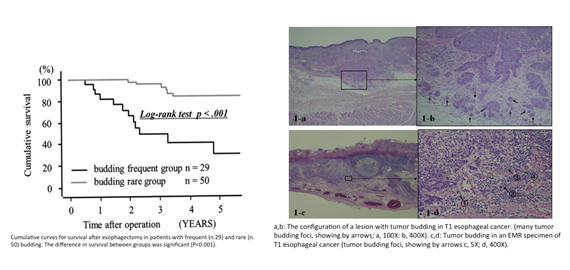
Antethoracic Pedicled Jejunum Reconstruction with the Supercharge Technique for Esophageal Cancer
Gastric tube is the first choice as an esophageal substitute for reconstruction after esophagectomy. Colon or jejunum is selected for patients in whom stomach cannot be used. Colon interposition is reported to have a high incidence of anastomotic leakage and mortality. For safer surgical treatment, the authors adopted supercharged pedicle jejunum reconstruction as the operation of choice in patients with esophageal cancer who had no stomach to use as an esophageal substitute.
Antethoracic pedicled jejunum reconstruction with the supercharge technique is technically demanding, it is a reliable technique and contributes to successful reconstruction after esophagectomy for patients in whom stomach is not available for reconstruction.
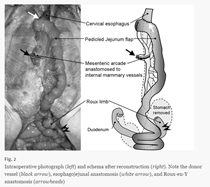
Feeding duodenostomy decreases the incidence of mechanical obstruction after radical esophageal cancer surgery.
Nutritional support influences the outcome of gastroenterological surgery, and enteral nutrition effectively mitigates postoperative complications in highly invasive surgery such as resection of esophageal cancer. However, feeding via jejunostomy can cause complications including mechanical obstruction, which could be life threatening. Feeding via duodenectomy could be the procedure of choice since neither mechanical obstruction nor relaparotomy was seen during enteral feeding through this technique.
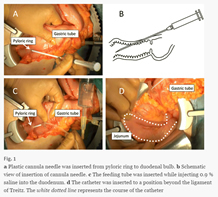
Method of bilateral pleural drainage by single Blake drain after esophagectomy.
Clinicians often encounter left pleural effusion after esophagectomy, which sometimes necessitates thoracentesis. We have introduced a new drainage method, bilateral pleural drainage by single Blake drain (BDSD).
The amount of total drainage in the BDSD group was significantly higher than that in the conventional drain (CD) group (P < 0.0001). The rates of left pleural effusion and left lower lobe atelectasis in the BDSD group were significantly lower than those in the CD group (P < 0.0001 and P < 0.0001, respectively). No patients developed a left pleural effusion necessitating thoracentesis drainage in the BDSD group. This method is therefore clinically useful after esophagectomy.
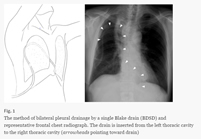
Division of stomach surgery
Role of the tumor microenvironment in the pathogenesis of gastric cancer, focusing on cancer associated fibroblasts
Cancer associated fibroblasts (CAFs) are central elements of tumor microenvironment and the most prominent cell type within the tumor stroma of many cancers. We are trying to purify "activated" CAFs by cell sorting procedure using flow cytometry and investigate influences of CAFs on tumor growth and chemo-resistance. Moreover, genome-wide expression profiling is ongoing to identify novel CAF-associated markers.
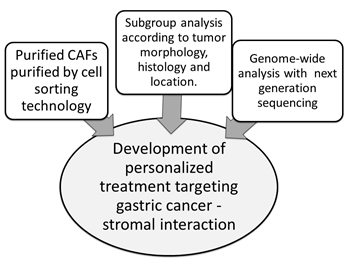
Transcriptome analysis for development of new multidisciplinary treatment specific to the type of recurrences of gastric cancer
We are trying to identify novel molecular targets responsible to metastases of gastric cancer cells. With the next generation sequencing analysis, some promising candidates have been detected and subsequently their contributions in formations of metastatic lesions and drug resistance are now under investigation.
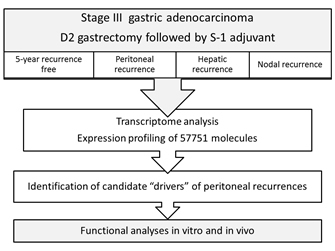
Division of liver surgery
Identification of genes that are associated with oncogenesis and prognosis through epigenetics in hepatocellular carcinoma
Understanding of the molecular mechanisms and alterations behind the initiation and progression of hepatocellular carcinoma (HCC) is essential for the early detection of the disease and to identify novel therapeutic and clinical targets for HCC. We are attempting to identify a novel tumor suppressor genes silenced through aberrant DNA methylation and in parallel with novel epigenetic biomarkers for initiation and progression of HCC.
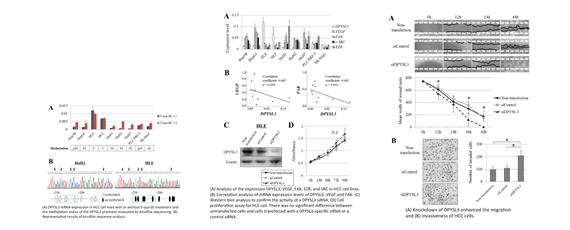
Division of pancreatic surgery
Epithelial to Mesenchymal Transition (EMT) predicts prognosis in pancreatic cancer.
EMT plays an important role in cancer invasion and metastasis and is associated with early dissemination. There was a significant correlation between EMT status and CA19-9 levels (p = 0.020), peritoneal washing cytology (p = 0.025), portal vein invasion (p = 0.038) and lymph node metastasis (p = 0.030). The median survival for patients with epithelial tumors was 40.2 months as compared to 13.7 months for patients with mesenchymal tumors. Multivariate analysis demonstrated that perineural invasion (p = 0.024), lymph node metastasis (p = 0.033) and EMT status (p <0.0001) were significant prognostic factors. Interestingly, adjuvant chemotherapy (gemcitabine and/or S-1) improved the median survival time (MST) from 10.8 to 16.1 months in patients with mesenchymal tumors (p = 0.002).
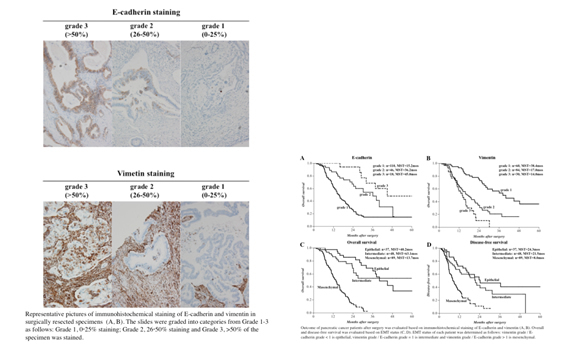
Modified Blumgart Anastomosis for Pancreaticojejunostomy: Technical Improvement in Matched Historical Control Study
To approximate the pancreatic parenchyma to the jejunal seromuscular layer, 120 patients underwent anastomosis using the Kakita method (Figure A)) and 120 underwent anastomosis using the modified Blumgart anastomosis (m-BA) method (Figure B-E). Consequently, the rate of clinically relevant POPF formation was significantly lower in the m-BA group than that in the Kakita group (2.5 vs 36 %; p<0.001). The duration of drain placement and the length of postoperative hospital stay were significantly shorter in the m-BA group. Multivariate analysis showed that m-BA was an independent predictor of non-formation of POPF (hazard ratio, 0.02; 95 % confidence interval, 0.01-0.08; p<0.001).
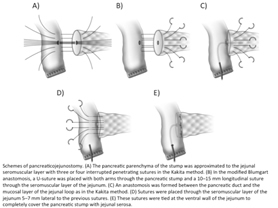
Division of colorectal surgery
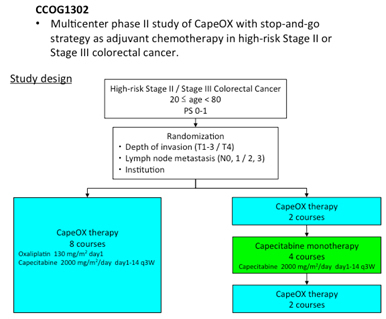
Two-dimensional response as surrogate marker of overall survival in patients with metastatic colorectal cancer
The identification of surrogate markers for long-term outcomes in patients with metastatic colorectal cancer (mCRC) may help in designing treatment regimens. The aim of this study was to assess whether two-dimensional response (2-DR) can serve as a new surrogate marker for overall survival (OS) in patients with mCRC. The study population consisted of 99 patients with mCRC from two independent cohorts who were treated with oxaliplatin-based chemotherapy plus bevacizumab. 2-DR was defined as an area enclosed by coordinate points, including early tumour shrinkage (ETS) at 8 weeks, depth of response (DpR) at nadir and 20% increase over nadir at progression. Each variable was weighted by its contribution rate to OS. The model was developed and internally validated in the learning cohort, and the performance of this model was externally verified in the validation cohort. Spearman correlation coefficients for 2-DR and OS in the learning and validation cohorts were 0.593 and 0.661, respectively. The C-indexes in predicting OS were 0.724 (95% CI: 0.623-0.815) in the learning cohort and 0.762 (95% CI: 0.651-0.873) in the validation cohort. OS was significantly longer in patients with high 2-DR values than in patients with low 2-DR values in both the learning (37.0 versus 24.1 months, p<0.001) and validation (41.2 versus 20.4 months, p<0.001) cohorts. In contrast, differences in ETS and DpR were not statistically significant. Multivariate analyses showed that 2-DR was an independent prognostic factor for OS.
